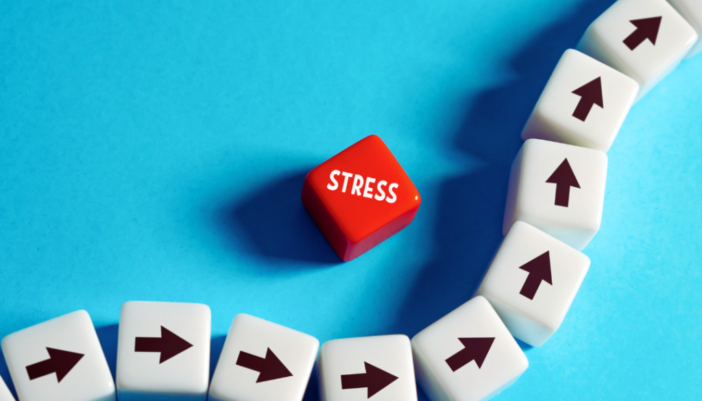Gradual Exposure: A Path to Overcoming Fear and Avoidance
Gradual Exposure: A Path to Overcoming Fear and Avoidance
Fear and avoidance can dominate our lives, often stemming from past traumas, anxieties, or ingrained habits. While these avoidance behaviors might offer temporary relief, they can hinder our personal growth, relationships, and overall well-being in the long run. We know we want to change this, but that’s the thing about avoidance…we want to avoid working on confronting our avoidance too!
One effective method to combat these tendencies is gradual exposure to hard things. The things we don’t want to confront, do or risk conflict around. But once we are mentally strong enough and have some decent support around us, it’s the best way to begin facing things head on, in a proactive manner. We know how awful it can feel if we feel like we are running from something, and how the longer we put something off the worse it feels. Conversely, when we gather the courage to start dealing with life, we begin to heal some things, especially the wounds to our self-concept.
What is Gradual Exposure?
Gradual exposure is a therapeutic technique used to help you confront and reduce your fears and anxieties. The process involves exposing oneself to the source of fear in a step-by-step manner, starting with less intimidating scenarios and gradually progressing to more challenging ones. This incremental approach allows you to build confidence and resilience, ultimately diminishing the power of your fears.
Why It Works
We can safely assume that avoidance reinforces fear. When we avoid a feared situation, we never have the opportunity to learn that our fears are often exaggerated or unfounded. Gradual exposure helps break this cycle by encouraging us to face our fears in a safe and controlled environment, allowing us to experience and process our emotions without resorting to avoidance. I think this work must be done alongside working on boundaries – for two reasons. First, I think we need to know there ARE boundaries to protect our well-being and validate our experiences, and second, doing the boundary work helps us approach reality in a healthy way.
Steps in Gradual Exposure
- Identify the Fear:
- The first step is to clearly identify the specific fear or situation you want to address. This could range from social anxieties, such as public speaking, to specific situations or relationships that you need to set boundaries in.
- Create a Fear Hierarchy:
- Once the fear is identified, the next step is to create a fear hierarchy. This involves listing situations related to what you fear, ranked from least to most anxiety-provoking. For instance, if you fear public speaking, your hierarchy might start with speaking in front of a close friend and gradually build up to giving a presentation to a large audience.
- Begin with the Least Intimidating Step:
- Start with the least anxiety-provoking situation on your hierarchy. This initial step should be challenging but manageable. The goal is to face the fear without feeling overwhelmed.
- Practice and Build Confidence:
- Repeatedly expose yourself to the situation until your anxiety decreases significantly. This might require multiple attempts. The key is consistency and perseverance. As you become more comfortable, move on to the next step in your hierarchy.
- Use Coping Strategies:
- Incorporate coping strategies, such as deep breathing, mindfulness, or positive self-talk, to manage anxiety during exposure. These techniques can help you stay calm and focused.
- Gradually Progress:
- Continue moving up your fear hierarchy, gradually facing more challenging situations. Each successful step builds confidence and reduces overall fear.
Benefits of Gradual Exposure
- Reduces Anxiety:
- By confronting fears directly, gradual exposure helps reduce anxiety over time. The more you face your fears, the less power they have over you.
- Builds Confidence:
- Successfully navigating through feared situations a little bit at a time boosts self-confidence and self-efficacy, making it easier to tackle future challenges. The evidence of having done the first one doesn’t lie, and it’s the best thing for your brain to begin to trust that you can do more!
- Improves Emotional Regulation:
- As you navigate facing challenges, your fear decreases over time, and you feel more grounded and less reactive. I do recommend also doing healing work around past trauma and/or neglect as well. It takes so much energy to be in freeze or flight, and the grief work you will do will also help you release so much.
- Enhances Daily Functioning:
- Overcoming avoidance behaviors can improve overall quality of life, allowing you to engage more fully in in your life. You will overall have less fear and focus less out there and more within, so you will feel less guilt and shame for not dealing with things.
Practical Tips for Implementing Gradual Exposure
- Start Small:
- Begin with manageable steps and gradually increase the difficulty. Patience is key. You will learn as you go what works, what doesn’t and what you tweak. The evidence, again, won’t lie so your brain can trust it, and you can keep going.
- Seek Support:
- Consider working with a therapist or a coach who can help you. Professional guidance can provide valuable support and ensure you progress at a safe and appropriate pace.
- Stay Consistent:
- Regular practice is essential. Even small, daily exposures can lead to significant improvements over time. I recommend to my clients to pick one thing that seems (almost) doable and tackle it until you make it a habit to deal with it. You will know when it’s time to do the next thing.
- Celebrate Progress:
- Acknowledge and celebrate your successes, no matter how small. Each step forward is a victory, and that’s not just a saying. Your brain needs to SEE and EXPERIENCE you taking steps, and every time you do that, you move from your limbic system to your thinking brain, which is crucial!
Gradual exposure is a powerful tool for overcoming fear and avoidance. By systematically facing and confronting our fears in a controlled manner, we can reduce anxiety, build confidence, and enhance our overall well-being. While the journey may be challenging, the rewards of increased freedom, resilience, and personal growth make it well worth the effort. Remember, the path to overcoming fear starts with a single, courageous step.




